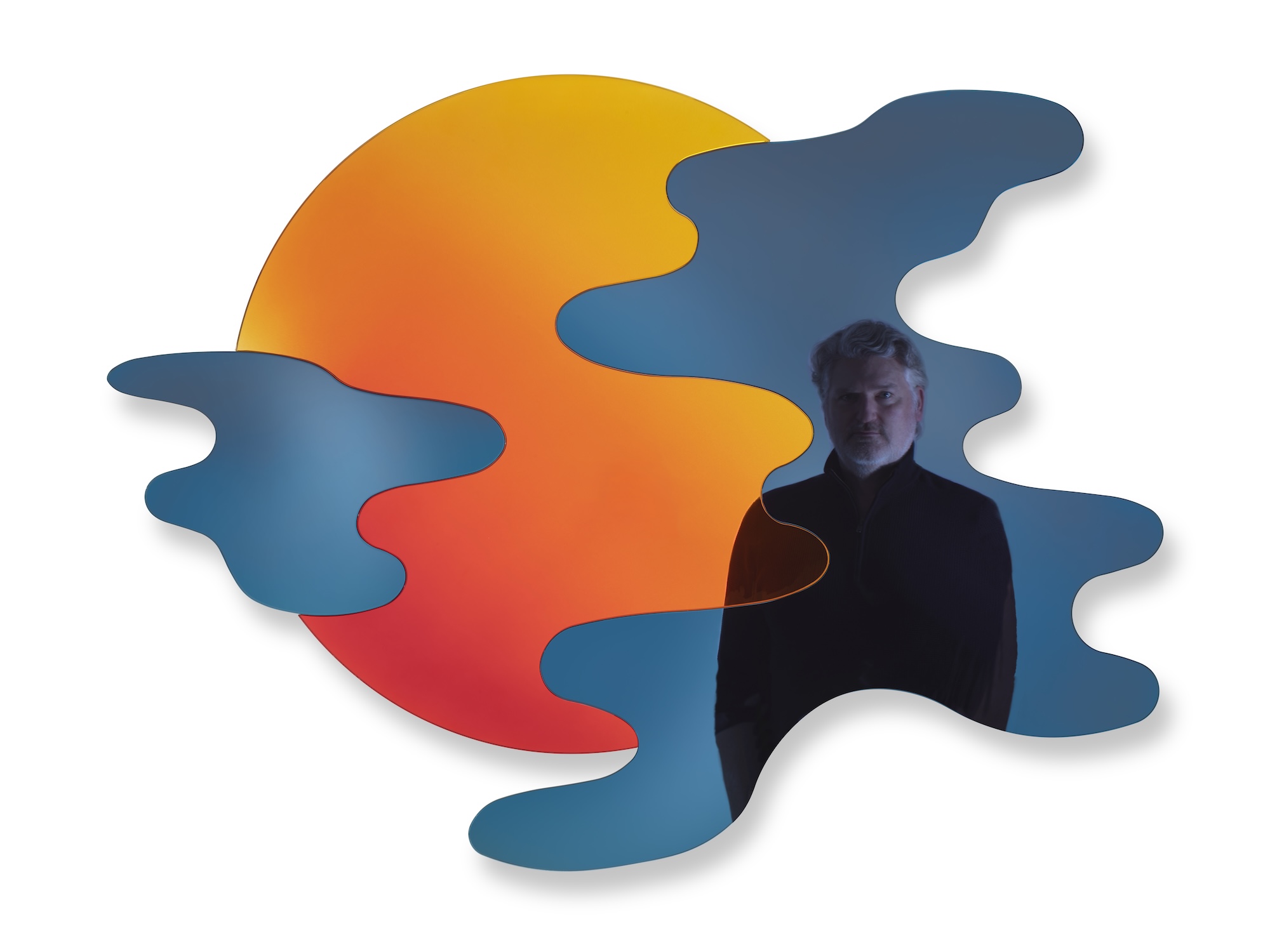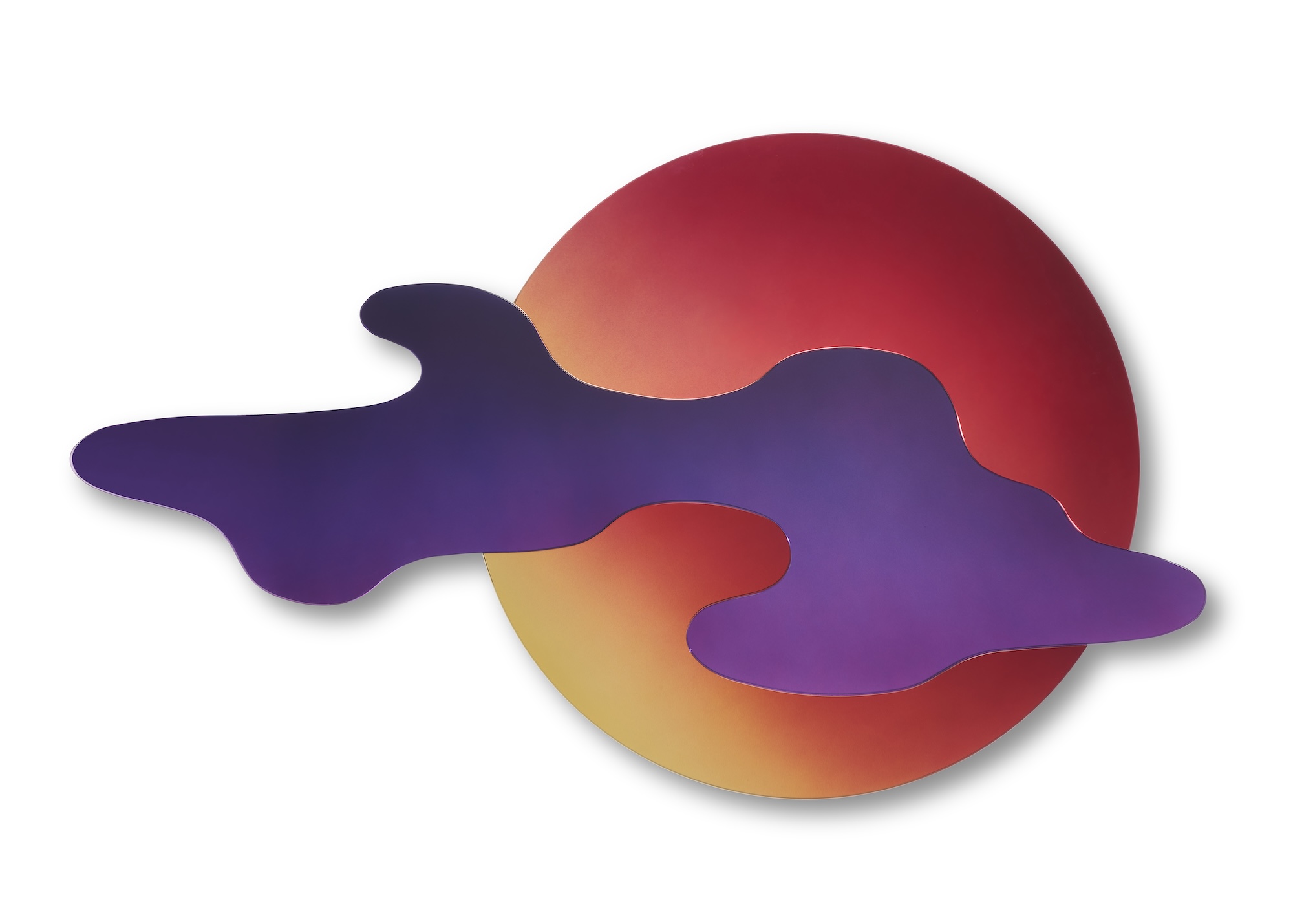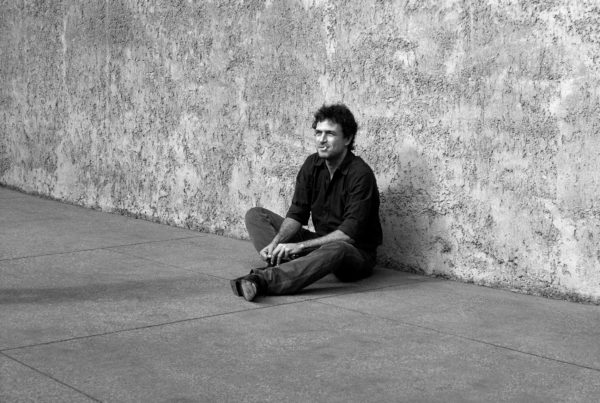Philippe Cramer in the clouds
Geneva artist Philippe Cramer exhibited his Onar mirage clouds at the Art Genève fair at the end of January. The works are thought- and reflection-provoking in every sense of the word. Isabelle Cerboneschi
Philippe Cramer has long accepted being defined as a designer. A justified label, since he created objects that had a use in the home and that we usually call ‘furniture’. A table, lamps, stools, benches… But when you agree to wear a suit that’s not tailored to you, sometimes the seams crack and you reveal yourself in all your nakedness. That’s what happened to Philippe Cramer two years ago. Artist is a word in which he feels much better. It’s what he’s always been, without ever daring to admit it to himself.
Before opening his gallery in the well-named rue de la Muse in Geneva and founding his design studio Cramer + Cramer in 2001, Philippe Cramer obtained a degree in the history of nineteenth and twentieth century decorative arts, followed by a Bachelor in Fine Arts from Parson’s School of Design in New York in 1996. He wanted to extract both substance and beauty from Switzerland to create objects that were halfway between design and art, before deciding that his creations didn’t need a function to exist.
Among his latest works, Philippe Cramer’s Onar mirrors seem to be portals opening onto another world. They reflect a certain reality that is not quite reality, because things are embellished and transformed by colours and lines. Eventually, you can look into them, but the reflection they send back is a mirage. A beautiful mirage… We met the artist in January on his stand at the last edition of Art Genève.
Onar 6, Philippe Cramer’s mirror work, was inspired by a mirage the artist saw in California. ©Philippe Cramer
INTERVIEW
How did you come up with the idea of creating mirrors in the shape of clouds?
Philippe Cramer: In my work, there is a regular link with dreams, magical appearances, optical illusions and ancient symbols. For this work in particular, I was inspired by the mirages that can appear in hot countries. This experience happened to me during a trip I made to California, on the road between Los Angeles and Las Vegas: the reflection of the sun was projected onto the asphalt. This effect of duplication or mirroring between reality and illusion interested me.
What materials are they made from?
To create these new works on mirrors, which I call ‘Onar’, the Greek word for dream, I used a technique from industry known as laminated glass. A sheet of transparent acetate is placed between two panels of glass, creating a secure sheet of glass. If this sheet of glass were to break, it would not shatter into a thousand pieces. I hijacked this industrial technique by painting the acetate sheet with a gradation of colours before gluing the laminate.
Philippe Cramer calls his works on mirror ‘Onar’, the Greek word for ‘dream’. Onar 5 ©Philippe Cramer
When you look at them, these pieces break with the traditional function of the mirror. What was your underlying intention?
It’s difficult for me to put my deepest intentions into words because I work instinctively and viscerally and rarely start from a conceptual or intellectual approach. But I do enjoy exploring subterfuges to distort reality and even transform it. Besides, our personal reality never reflects that of others. It’s all a question of perspective and the filter through which we experience life.
Do you feel that the viewer is part of the work, even if only for a short time?
My artistic path has led me to explore the relationship between the idea of the work of art, considered sacred and therefore untouchable, and the functional object. Our relationship with the sublime is imbued with so many prohibitions: don’t touch, don’t use, don’t compare. By creating works that can be caressed, reflected back at us or used as a seat, I hope to build a bridge between the dogmatic notion of the divine and our earthly reality, riddled with doubts. I don’t see the viewer per se as part of the work, but I do think that the work allows the viewer to feel a direct relationship with an altered dimension of their everyday reality. Whether you call that beautiful, divine, dreamlike or sacred, it’s an individual definition.
Discover Philippe Cramer and his Onar mirrors in the gallery Cramer + Cramer Sàrl, Rue de la Muse 8, 1205 Geneva, Switzerland
















